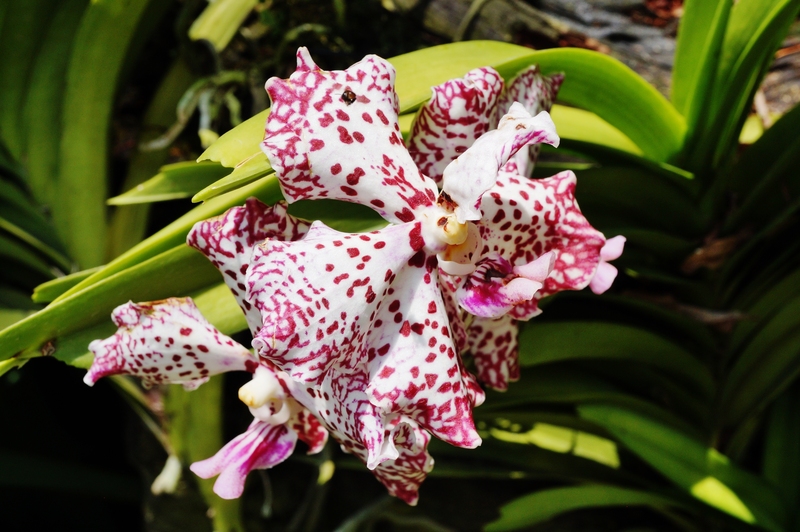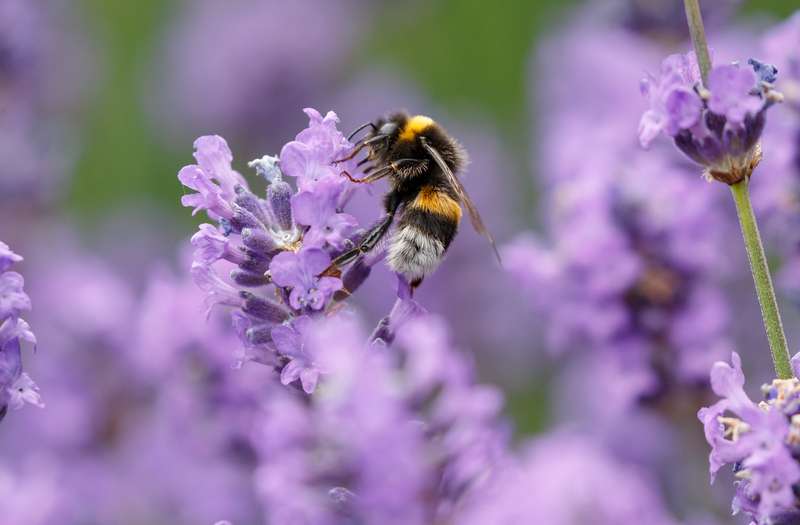Balancing Play and Nature in a Kid-Centric Garden
Posted on 21/09/2025
Balancing Play and Nature in a Kid-Centric Garden
A kid-centric garden offers a magical blend of fun, learning, and connection with the natural world. For families, achieving a harmonious balance between playful elements and thriving greenery can turn an outdoor space into a haven for adventure, exploration, and growth. In this comprehensive guide, you'll discover practical strategies, creative design ideas, and nature-friendly solutions tailored for gardens where children can thrive. Let's explore the art of balancing play and nature in your own backyard.
Why Create a Kid-Centric Garden?
Designing a child-friendly garden is about more than just adding play equipment. It's about crafting an environment that sparks curiosity, encourages movement, and nurtures a lifelong appreciation for nature. The benefits include:
- Physical activity through climbing, running, and creative games.
- Sensory stimulation from diverse plants, textures, and sounds.
- Opportunities for imaginative play and storytelling.
- Developing ecological awareness and responsibility.
- Strengthening family bonds through shared outdoor experiences.

Key Principles for Balancing Play and Nature
Achieving a harmonious balance between play and nature involves intentional planning and thoughtful design. Keep these principles in mind:
- Safety First: All play areas should be constructed with child safety in mind, avoiding hazardous plants and using natural, non-toxic materials.
- Inclusion of Nature: Incorporate natural materials, edible gardens, and wildlife-friendly features to foster environmental stewardship.
- Flexibility and Growth: Design spaces that evolve with your child's interests and capabilities.
- Low-maintenance Solutions: Ensure the garden is easy to care for so it remains enjoyable, not overwhelming.
Designing Play Spaces That Blend with Nature
Integrate play spaces seamlessly with existing natural features for a cohesive and engaging garden. Here are some inspiring ideas:
Use Natural Play Structures
- Logs and stumps: Perfect for balancing, hopping, and climbing.
- Living willow arches or tunnels for secret hideaways
- Boulders that double as climbing mounts or storytelling circles.
- Sandpits bordered with stones and native plants.
These elements blend beautifully with planting schemes, maintaining the aesthetic and ecological integrity of your kid-centered garden.
Encourage Creative Play
Foster imaginative play with fun, eco-friendly features:
- Mud kitchens for messy, sensory play using stones, water, and natural ingredients.
- Fairy gardens tucked under trees or in nooks for mini-adventures.
- Loose-parts play areas with shells, pinecones, branches, and pebbles.
- Story circles or amphitheater-style log seating for group storytelling or performances.
Combining these playful elements with your garden's planting makes every visit outdoors a new adventure for your child.
Plants That Support Child-Centered Play
Nature play in a kid-centric garden thrives alongside careful plant selection. Prioritize:
Non-Toxic and Allergen-Friendly Plants
- Sunflowers, marigolds, and nasturtiums add color, are edible, and attract pollinators.
- Herbs like mint, lavender, and basil for touch, taste, and aroma.
- Blueberry and raspberry bushes for snacking and wildlife support.
- Soft-leaved grasses such as Pennisetum for sensory stimulation and gentle hiding places.
Plants for Play
- Bamboo for den-making and natural screens.
- Climbing vines like peas or beans for living teepees.
- Tough groundcovers such as clover for resilient paths and soft landings.
Wildlife-Friendly Features: Bring Nature Closer
Invite birds, insects, and small animals into your garden for kids by adding:
- Log piles or rockeries for beetles and frogs.
- Mini-ponds (safely covered) to attract dragonflies and frogs.
- Bird feeders, bat boxes, and bug hotels.
- Native flowering plants for pollinators and butterflies.
These features support your local ecosystem and give children countless opportunities to observe and learn from nature.
Safety Considerations in a Play-Oriented Garden
When balancing play and nature in a child-friendly garden, safety is paramount. Use these tips to mitigate risks:
- Avoid thorny, spiky, or toxic plants (e.g., foxglove, yew).
- Keep water features shallow and supervised, or use covers.
- Mulch play areas with soft bark, wood chips, or rubber to cushion falls.
- Ensure climbing frames or treehouses are sturdy, with secure railings.
- Maintain clear sightlines for adult supervision, especially for younger children.
Learning Opportunities: Growing Curiosity
Your kid-centric backyard doubles as an outdoor classroom. Encourage learning and sustainability by:
- Planting vegetable patches for hands-on gardening skills and healthy eating habits.
- Setting up a weather station or bug observation corner.
- Composting with child-sized bins, teaching about waste and decomposition.
- Creating signs or labels to help kids learn plant names and observe growth.
Inspiring children through real-world experiences fosters a deeper appreciation for the environment.
Design for All Ages: Grow with Your Child
A kid-focused garden should adapt as children grow. Here's how to future-proof your outdoor space:
- Incorporate moveable play features that can shift or change as interests develop.
- Choose plants that mature gracefully and continue offering sensory value.
- Allocate zones for active, noisy play as well as calm, reflective activities.
- Leave open space for unstructured activities, from soccer to picnics or stargazing.
Sustainability and Eco-Friendly Choices
Creating a balanced, sustainable nature play garden teaches children about environmental responsibility. Try to:
- Use recycled or upcycled materials for paths, borders, or play structures.
- Limit pesticides and fertilizers, opting for organic gardening methods.
- Harvest rainwater for irrigation and water play.
- Choose native plants and minimize lawn size to support biodiversity.
Easy Upkeep: Keeping Fun Manageable
Make sure your child-friendly garden doesn't become a chore. Use these maintenance-friendly strategies:
- Mulch extensively to reduce weeds and conserve moisture.
- Install drip irrigation or soaker hoses for hassle-free watering.
- Choose slow-growing, low-maintenance shrubs.
- Involve kids in simple gardening tasks to spread the workload and teach responsibility.
Seasonal Ideas to Keep Play & Nature Fresh
Keep your playful nature garden engaging all year:
- Spring: Plant wildflowers together and watch pollinators arrive.
- Summer: Set up water play, tents, and outdoor painting easels.
- Autumn: Rake leaves, collect seeds, and build dens or scarecrows.
- Winter: Feed birds, create ice ornaments, or hang nature crafts in trees.
By celebrating the seasons, you help children sense the rhythms of the natural world.
Must-Have Features for Your Kid-Centric Garden
- Multi-use lawn: For sports, games, or picnics.
- Mature shade trees for climbing, swinging, and cooling off.
- Wildlife feeding stations to observe birds and insects.
- Edible gardens for taste exploration.
- Quiet corners with benches or hammocks for reading and daydreaming.
Common Mistakes to Avoid
Balancing play and nature can be challenging. Prevent these common pitfalls:
- Overcrowding with too many play structures, leaving little green space.
- Ignoring plant growth habits, leading to overgrown or unsafe areas.
- Neglecting sightlines, which can make supervision difficult.
- Using too many synthetic materials that detract from the natural feel.
- Forgetting to involve your children in the design--after all, it's for them!
Quick Tips for Success
- Involve children from the planning stages through planting and play.
- Visit public gardens or parks for inspiration.
- Use bold colors and varied textures to create sensory appeal.
- Rotate toys and features to keep the garden space fresh.
- Stay flexible and tweak your garden over time as your family's needs evolve.

Frequently Asked Questions (FAQ)
What is a kid-centric garden?
A kid-centric garden is an outdoor space specifically designed to support children's play, learning, and interaction with nature. It seamlessly blends play features with lush, vibrant planting to create a safe and engaging environment.
What are the best plants for a child-friendly garden?
Choose non-toxic, resilient plants such as sunflowers, marigolds, nasturtiums, herbs, and berry bushes. Avoid plants with thorns or poisonous parts, and consider allergy-friendly options.
How do I balance play and nature in a small garden?
Use multi-purpose elements like climbing plants on fences, movable play items, and vertical gardens. Incorporate natural materials and layered planting to maximize space and sensory richness.
Is it safe to attract wildlife to a kid's garden?
Yes, with proper supervision and safe design (e.g., covered ponds, safe insect hotels), wildlife-friendly features are beneficial, offering invaluable learning experiences while supporting your local ecosystem.
Conclusion: Creating a Playful, Natural Sanctuary
A thoughtfully designed kid-centric garden provides endless opportunities for play, discovery, and family connection. By carefully balancing playful spaces with vibrant nature, you'll foster joy, health, and environmental stewardship in your children that will last a lifetime.
Whether you have a sprawling yard or a compact urban plot, you can craft a play-and-nature paradise that adapts as your children grow, keeping every season exciting and every day outdoors an adventure. Embrace these ideas, involve your little ones, and watch your garden become the heart of your family life!

